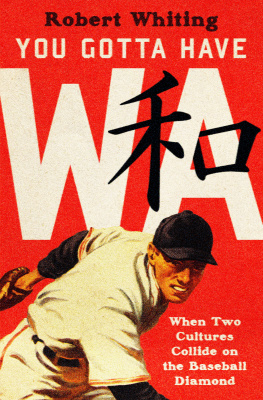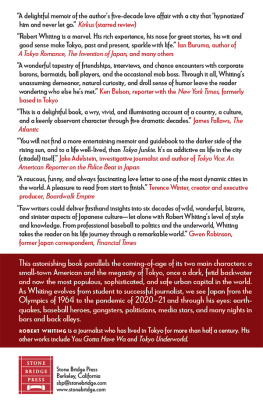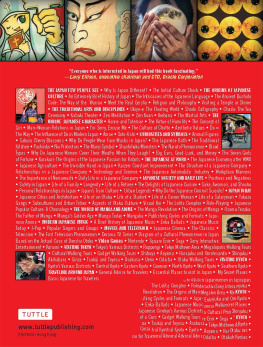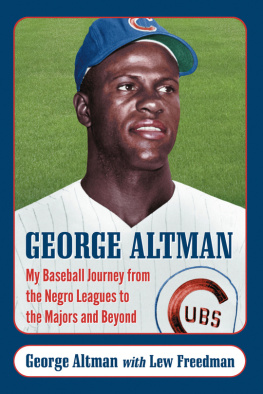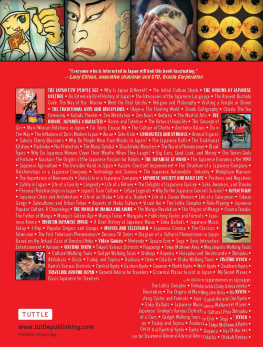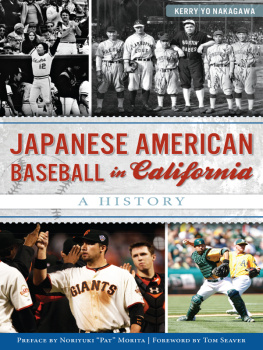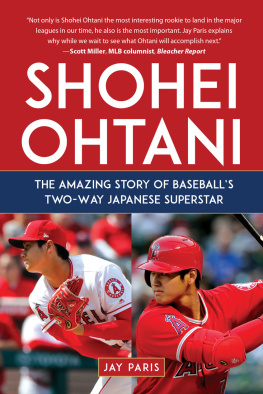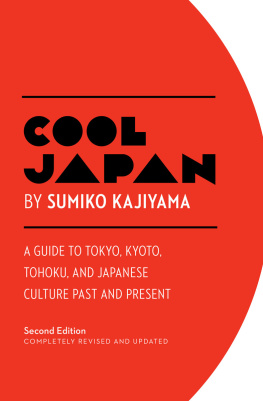Pagebreaks of the print version
Landmarks

You Gotta Have Wa
When Two Cultures Collide on the Baseball Diamond
Robert Whiting
To my wife Machiko, one of the few living Japanese who doesnt like baseball, but who still found it in her heart to help me with this book.
Acknowledgments
Id like to thank the following people who all helped me with this book in one way or another: Corky Alexander, editor-in-chief, Tokyo Weekender; Koichiro Ando, Esquire Japan editor; Michiko Araki, journalist; Randy Bass; Bob Brown, public relations director of the Baltimore Orioles; Connie Bond, associate editor, Smithsonian; Pete Carrie and Robert Creamer, Sports Illustrated; Warren Cromartie, outfielder, Tokyo Giants; Mrs. Roland A. Crowe; Alan Field; Neil Gross, Business Week; Haruo Kikuchi, editor, Playboy Japan; Noriko Kobayashi; Leron Lee and Leon Lee; S.K., Asahi Shimbun; Robert Klaverkamp, publisher, Asia Week; Brian McKenna; Midori Matsui; Masashi Matsumoto, writer; Anton Merkin; Don Moser, editor, Smithsonian; Kiyoshi Nagasawa, editor-in-chief, Esquire , Japan; Mitsuyoshi Okazaki, Bungei Shinju; Jiro Oishii, Daily Sports; Gil Rogin, Time-Life; Morse Saito, Mainichi Daily News; Eduardo Sanchez, McCann-Erickson; Julia Scully, Fraser Steele, Paul Solman, McNeil-Lehrer; Takashi Shimada, Boston Consulting Group; Howard Smith, BBC; Shoichi Suzuki, Shukan Gendai; Yukiko Shimahara; Dwight Spenser, Shunji Terada, Nikkan Gendai; Tetsuyuki Ueda, Gekkan Gendai; Alice Volpe; Robert Wargo, editor-in-chief, PHP Intersect; Masahiko Watase, editor, Shukan Gendai; Junji Yamagiwa. Also a tip of the cap to the Carmel Oendan, Sheldon, Jo, Ned, Joseph, Margo, Buck, Debbie, Peggy, and also to Pat and Barbara Connor in New York.
Special thanks to Miwako Atarashi and the staff at the Japanese Baseball Hall of Fame and Museum, for their ongoing kindness and cooperation; to Tom Chapman, editor of Winds , who published earlier versions of the Oendan and Koshien Tournament material and who provided much encouragement over the years; and to Greg Starr, associate editor at Winds , for his continuing support and for the title, The Schoolboys of Summer.
Also a special note of gratitude to Bill Suzukawa of the Daily Sports; Kozo Abe of the Yukan Fuji; Hidesuke Matsuo, former chief editor of Number; and Atsushi Imamura of the Weekly Bunshun , for advice, assistance, and friendship offeredand gratefully accepted.
I am particularly grateful to Masayuki Tamaki, who helped me in so many ways. Tamaki-san gave me a guided tour of the wonders of Koshien High School ball, including a delightful trip to Rakusei Koko in Kyoto. He opened up the world of Meiji Era baseball to me and provided materials from his own private library. He also read the completed manuscript, ferreted out a number of errors, and offered thoughtful suggestions. To himand to his wife KyokoI owe a special debt of gratitude.
In addition, I want to thank Greg Davis and Tim Porter for listening while I read parts of the manuscript to them, Elmer Luke, who read it all and suggested certain revisions, and, most of all, Tom Scully, in Tokyo, who edited the first finished draft and offered invaluable comments and insights in the process.
Finally, I wish to thank Betsy Rapoport, who started this project in the spring of 1987, and Rick Wolff, my astute and encouraging editor, who engineered it to a safe conclusion. To him, his associate Jeanine Bucek, and copy editor Paul Heacock, a big arigato.
I researched this book over a period of years beginning in 1976 and ending in 1988. Much of that time, I lived in Tokyo writing for various Japanese and American publications. A previous book, The Chrysanthemum and the Bat , was quite successful in Japan and many doors opened up to me as a result. The genesis of this book was an article I wrote for Sports Illustrated , entitled You Gotta Have Wa. A subsequent piece I did for the Smithsonian , East Meets West in the Japanese Game of Besuboru, brought MacMillan into the project.
I interviewed most of the people mentioned in this book, although Yoshiaki Tsutsumi and a couple of others could not make themselves available. I also relied on secondary sourcesbooks, accounts in Japanese newspapers and magazines, and television reportsand witnessed first-hand many of the incidents described in the book. The Baseball Hall of Fame and Museum in the Tokyo Dome, with its library of 28,000 books and magazine articles, was a particularly useful source of historical materials. Also informative were many of the museums exhibits. The Yokohama Kaiko Shiryo-Kan provided Meiji Era newspapers, both in English and Japanese.
The list of interviewees includes the following: Joji Abe, Kozo Abe, Chris Arnold, Bruce Anderson, Toshiro Ashiki, Osamu Arai, Doug Ault, Roberto Barbon, Linda Bass, Randy Bass, Johnny Bench, Don Blasingame, Sara Blasingame, Clete Boyer, Hal Breeden, Dan Briggs, Rod Carew, Gary Carter, Bob Castillo, Mike Clark, Keith Comstock, Warren Cromartie, Hector Cruz, Tommy Cruz, Dick Davis, Takenori Emoto, Yutaka Enatsu, Fumio Furuya, Rich Gale, Clyde Haberman, David Halberstam, Isao Harimoto, Tatsunori Hara, Orel Hershisher, Whitey Herzog, Dave Hilton, Patti Hilton, Tsuneo Horiuchi, Bob Horner, Dick Howser, Prof. Masaru Ikei, Kazuo Ito, Atsushi Imamura, Naoki Inose, Tim Ireland, Kennichi Ishida, Dr. Frank Jobe, Davey Johnson, Toru Kawasaki, Dr. Robert Kerlan, Harvey Kurland, Sachio Kinugasa, Willy Kirkland, Nicola Koizumi, Bowie Kuhn, Toyo Kunimitsu, Pete LaCock, Rich Lancellotti, Leon Lee, Leron Lee, Pamela Lee, Vicquie Lee, Jim Lefebvre, Brad Leslie, Mike Lum, Ramona Lum, Jim Lyttle, Carolyn Macha, Ken Macha, Ted McAneely, Bill Madlock, Charlie Manuel, Beverly Marshall, Jim Marshall, Bobby Marcano, Gene Martin, Felix Millan, Don Money, Sharon Money, Masaaki Mori, Choji Murata, Yoshiko Murata, Shigeo Nagashima, Luigi Nakajima, Hiromichi Nakamura, Jumbo Nakane, Jim Nettles, Fumio Nishino, Katsuya Nomura, Hiromitsu Ochiai, Ben Oglivie, Kunikazu Ogawa, Sadaharu Oh, Masayaru Okada, Steve Ontiveros, Pat Ontiveros, Keiji Osawa, Carlos Ponce, Dave Roberts, Frank Robinson, Pete Rose, Mike Reinbach, Luis Sanchez, John Scott, Barney Schulz, Toshi Shimada, Takezo Shimoda, John Sipin, Reggie Smith, Faga Soluita, Tony Solaita, Daryl Spencer, Don Sutton, Bill Suzukawa, Ryuji Suzuki, Shoichi Suzuki, Naoki Takahashi, Kennichi Takemura, Masayuki Tamaki, Ichiro Tanuma, Okichi Terauchi, Gary Thomasson, Jim Tracy, Jim Tyrone, Toshiyuki Ueda, Tadahiro Ushigome, Masahiko Watase, Gregory Wells, Linda White, Roy White, Terry Whitfield, Bump Wills, Bucky Woy, Ichiro Yagi, Koji Yamamoto, Kazuhiro Yamauchi, Wally Yonamine, Jane Yonamine.
This book was written between September 1987 and August 1988 in Tokyo, Seoul, New York, Mogadishu, and Kamakura, using a Toshiba T1100PLUS battery-operated laptop computer.
Robert Whiting
Kamakura, Japan
November 1988
Acknowledgments to the Revised Edition
Thanks to Kozo Abe, Osamu Nagatani, Isao Chiba, Yoshifuji Ejiri. Jack Gallagher. Wayne Graczyk. Itaru Kobayashi. Marty Kuehnert. Masaaki Nagino. Masayoshi Niwa. Don Nomura. Skip Orr. Jim Small, Sami Kawakami. Hiroko Kato. Mark Schreiber. The Tamakis. The Troellers. The Uflands. Taro Kawakami. Bob Spenser. Joseph Shaules. Ira Stevens. Michael Westbay. Shigeo Araki. Larry Rocca. The Hayanos. The Hillmans. Derek and Sue. Thanks to Jim Allen, Jeff Kingston, and Rob Smaal for reading the mss. and making corrections. Thanks to Peter Miller and David Shapiro for the final edits. And thanks to Tim OConnell at Vintage and Binky Urban at ICM.

